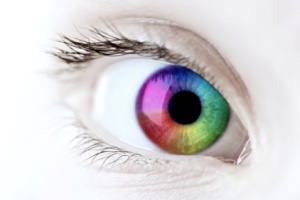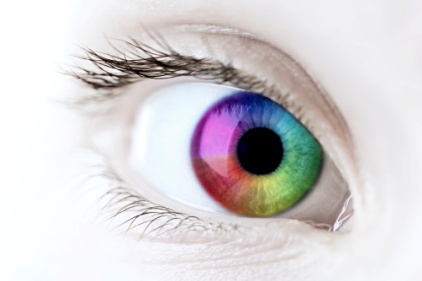 Iris recognition is a form of biometric identification, like fingerprinting. Like the fingerprint, the pattern in the iris is randomly formed during gestation, so no two individuals have identical iris patterns. Iris recognition technology uses an infrared illumination to allow a camera to create images of the intricate structure of the iris, which is then stored as a digital map that can be compared to an iris presented at the identification port to provide positive identification.
Iris recognition is a form of biometric identification, like fingerprinting. Like the fingerprint, the pattern in the iris is randomly formed during gestation, so no two individuals have identical iris patterns. Iris recognition technology uses an infrared illumination to allow a camera to create images of the intricate structure of the iris, which is then stored as a digital map that can be compared to an iris presented at the identification port to provide positive identification.
Advantages of Iris Recognition
Iris recognition has many advantages over other potential biometric technologies. One is that it can be used to identify a larger portion of the population than other biometric technologies, including fingerprinting. Another advantage is that the iris remains more stable than other biometric measures, meaning that once an iris map is registered, a person may not need to be re-registered for 30 years or more. The person to be identified is not required to touch the machine or even be closer than a few meters. Iris recognition is also relatively fast, so it has the potential for immediate commercial application.
Disadvantages of Iris Recognition
Iris recognition is, however, probably many years away from widespread application due to a number of factors.
First, building up an appropriate database of iris maps will take a long time, whereas the database for fingerprints and the technology for taking and checking fingerprints is already in place. Also, it is very difficult to use iris identification on an unwilling subject. The position of the eyelid and eyelashes can also lead to false rejects.
In addition, current iris recognition technology is susceptible to many types of frauds, including the use of a dead eye, or even a high-quality photo of a face. However, there are several recommendations for overcoming this weakness, including the use of changing light conditions to measure the iris at several points as it expands or contracts in response to the light.
Iris recognition may be the next phase of personal identification, and is another interesting ophthalmic technology.
If you would like to learn more about the eye, contact a local ophthalmologist today for a consultation.
Source: Wikipedia
